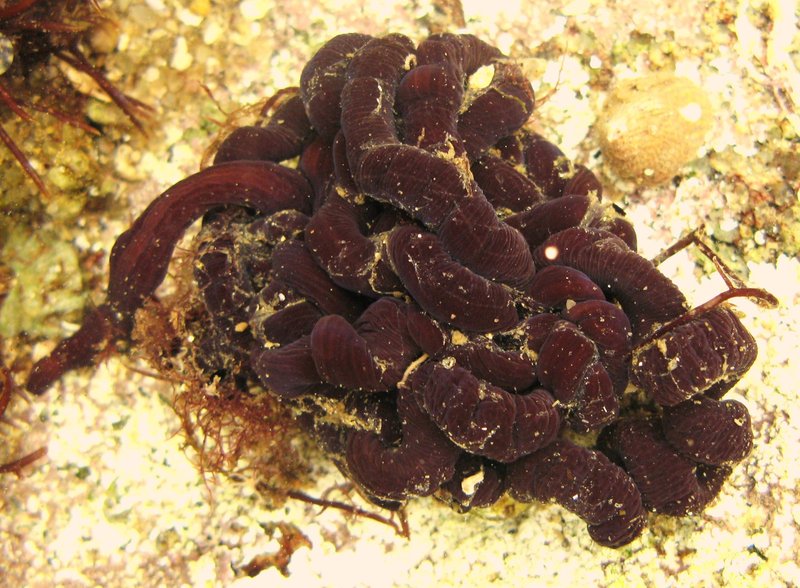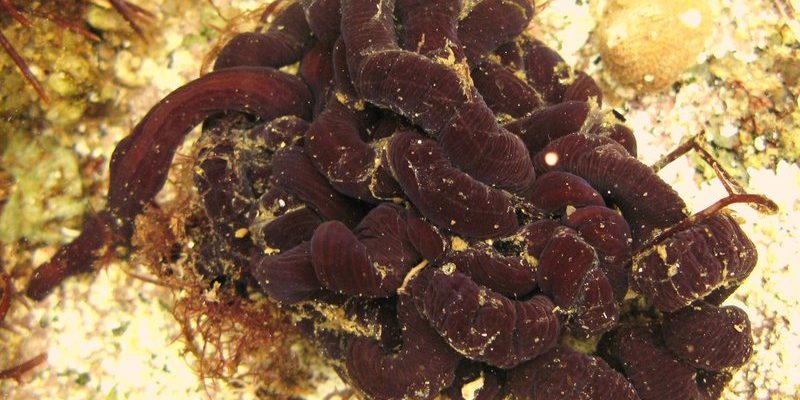
You might be wondering why we should care about something that looks like a noodle. Well, bootlace worms, scientifically known as *Lineus longissimus*, are not only incredibly interesting but also vital for understanding marine ecosystems. They can stretch up to 55 meters long, making them one of the longest animals on Earth! So, grab a cup of coffee, and let’s dive into the world of bootlace worms and their importance in marine education and interpretation.
What Are Bootlace Worms?
Bootlace worms are fascinating creatures found primarily in the cold waters of the North Atlantic and the Arctic. They belong to a group of segmented worms known as nemerteans. Unlike many marine animals, these worms can be quite elusive. They often hide in sand, mud, or seaweed, making them difficult to spot. But, when you do catch a glimpse of one, it’s like discovering a piece of ocean magic.
These worms can be surprisingly colorful, displaying shades of yellow, green, and even blue. They have a unique body structure divided into segments, which gives them the flexibility to move with grace through their watery homes. Their long, thin bodies are perfect for squeezing into tight spaces, allowing them to thrive in various marine environments. Honestly, if you think about it, their adaptability is quite remarkable, considering how different ocean habitats can be.
Bootlace worms also have a fascinating feeding mechanism. They use a specialized proboscis, which is like a long, sticky tube, to capture prey such as small fish and crustaceans. This hunting style highlights their role in the marine food web, as they help control populations of other marine organisms. It’s not just about looking cool; these creatures truly contribute to the balance of their ecosystems!
The Importance of Bootlace Worms in Marine Ecosystems
Understanding bootlace worms helps us grasp the intricate web of life in marine ecosystems. These worms are scavengers that help break down organic material on the ocean floor. By doing this, they recycle nutrients back into their environment, which supports a variety of marine life. If you think about it, they’re like nature’s recyclers!
Bootlace worms also serve as food for larger marine animals, including fish and birds. This makes them an integral part of the food chain. When marine educators explain this connection, it helps students appreciate the delicate balance of ecosystems. You might say that bootlace worms are the unsung heroes of the sea, playing a role that’s both critical and often overlooked.
Moreover, their unique biology can be a great teaching tool. For example, the regenerative abilities of bootlace worms can be fascinating for science students. They can regrow lost body parts, making them a fantastic example of resilience in nature. This aspect can lead to discussions about biological research and the potential medical applications of regenerative medicine.
Bootlace Worms in Marine Education
Integrating bootlace worms into marine education is incredibly valuable. Teachers can create engaging lessons that not only capture students’ attention but also deepen their understanding of marine biology. By incorporating hands-on activities like tide pooling or marine dissections, educators can help students explore the lives of these remarkable creatures up close.
Field trips to marine environments, such as tidal pools or coastal regions, are excellent opportunities for students to discover bootlace worms firsthand. During these explorations, they can learn about the habitats where bootlace worms live, how they interact with other species, and even how they contribute to the environment. It’s a real-world connection that fosters curiosity and appreciation for marine life.
Additionally, digital platforms and virtual education tools can enhance learning about bootlace worms. For instance, interactive videos can showcase their habitats and behaviors in action, making the learning experience more dynamic. Honestly, with the right resources, marine education can be both fun and informative, lighting a spark of interest in students that may last a lifetime.
Challenges in Studying Bootlace Worms
Studying bootlace worms does come with its challenges. Their elusive nature makes it difficult for researchers to observe and gather data on them effectively. Many bootlace worms spend their lives hidden in the substrate, making them hard to find during studies. Scientists often have to rely on indirect methods or the study of environmental samples to learn more about these fascinating creatures.
Another challenge is the impact of environmental changes on their habitats. Climate change, pollution, and habitat loss can all affect bootlace worm populations. Marine educators have a crucial role in addressing these issues by raising awareness about the importance of preserving marine environments. Through education and advocacy, we can promote sustainable practices that protect not only bootlace worms but the entire marine ecosystem.
Moreover, understanding bootlace worm behavior and biology can be complex due to their unique characteristics. Researchers often need specialized tools and techniques to study them adequately, which can lead to gaps in our knowledge. But hey, isn’t that the beauty of science? There’s always more to explore and discover!
The Role of Technology in Marine Education
Technology plays an increasingly vital role in marine education and the study of bootlace worms. Advances in underwater exploration tools, like remotely operated vehicles (ROVs) and underwater drones, have made it easier to observe marine life in its natural habitat. These technologies allow researchers to document the behaviors and habitats of bootlace worms without disturbing their environments.
Moreover, virtual reality (VR) and augmented reality (AR) can transform marine education experiences. Imagine students exploring a vibrant underwater ecosystem right from their classrooms! With VR, they can dive deep into marine environments and encounter bootlace worms and their habitats in an immersive way. It’s a fantastic way to get students excited about marine biology and conservation.
Online resources and databases are also invaluable for educators. Platforms that provide access to research papers, educational videos, and interactive tools can greatly enhance the learning experience. When students have access to quality content, they’re more likely to engage and retain information about bootlace worms and their ecological significance.
Connecting with the Community
Building a connection between marine education and the community can greatly enhance the understanding of bootlace worms and marine ecosystems. Community outreach programs, beach clean-ups, and marine workshops can foster awareness and appreciation for local marine life. When people see the beauty of creatures like bootlace worms in their environment, they’re more likely to support conservation efforts.
Involving local organizations and aquarium partnerships can also create enriching experiences. For instance, hosting “Meet the Marine Worms” events at aquariums where the public can learn about bootlace worms through fun presentations can inspire curiosity. It’s a way to bring the community together while educating them about the importance of marine ecosystems.
Engaging with local artists and storytellers can add another layer to this connection. Art inspired by marine life, including bootlace worms, can open up discussions about conservation and the beauty of our oceans. It’s a creative way to express appreciation for marine ecosystems while educating others about their importance.
In conclusion, bootlace worms are more than just unusual creatures in the sea; they play important roles in marine ecosystems and provide valuable opportunities for education and interpretation. By exploring their biology, behaviors, and significance, we can help foster a deeper appreciation for marine life among students and the community. Embracing technology and community engagement can further enhance marine education, ensuring future generations understand and value the incredible wonders of our oceans. Let’s keep the conversation flowing and continue to explore the depths of marine life together!

